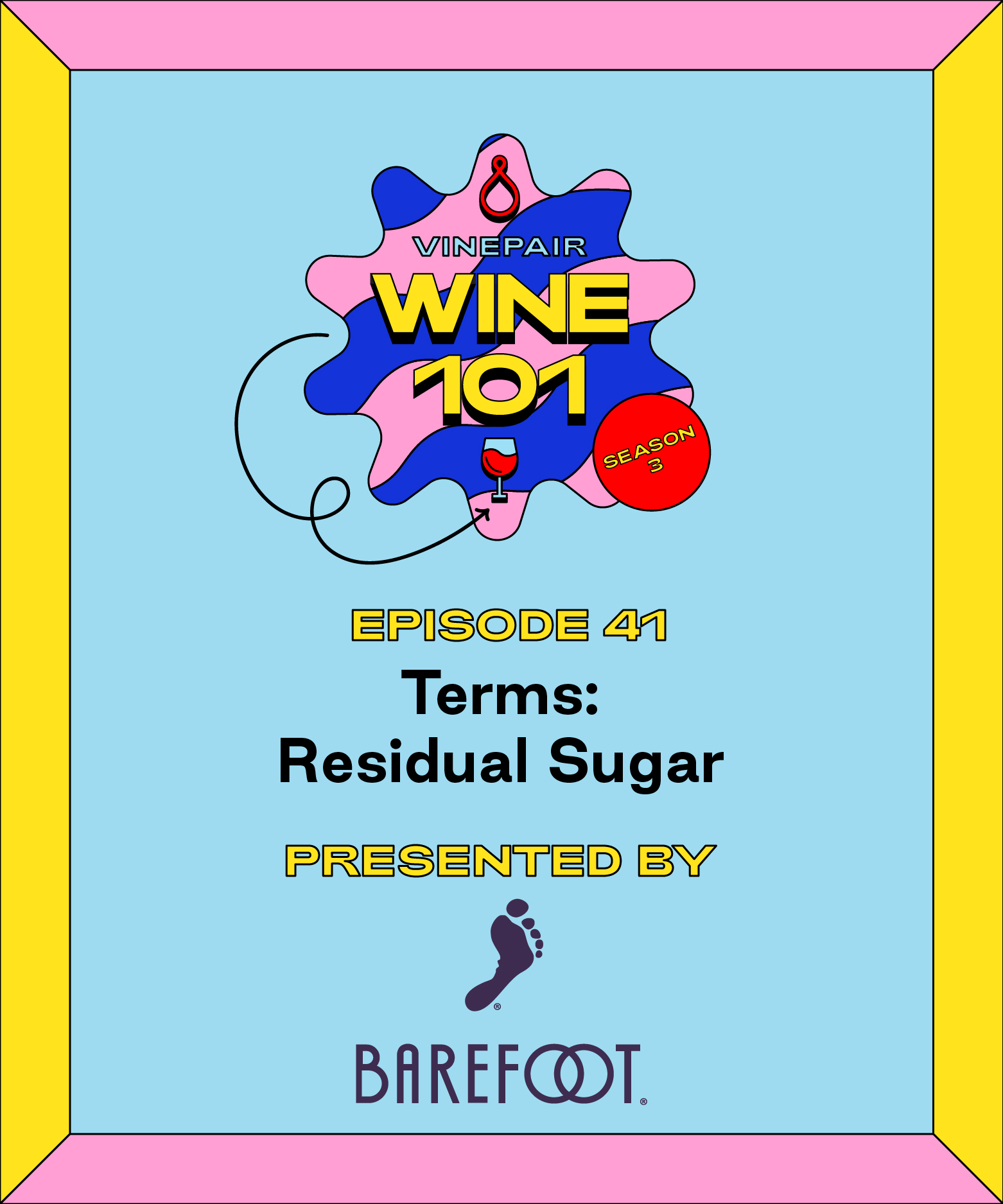
This episode of “Wine 101” is sponsored by Barefoot Wine. There’s nothing wrong with having a little sweet tooth, right? Residual sugar adds depth and complexity to the wine, and it’s no different with Barefoot’s Cabernet Sauvignon. Gracing your dinner table for more than five decades, Barefoot Cabernet Sauvignon is accessible, delicious, and reliable when it comes to mealtime.
When buying wine online, there are several stats that frequently appear next to each bottle, including the ABV, the wine’s pH level, and the RS level — or residual sugar content. But how does residual sugar affect wine and our palates? Well, that’s quite the egg to crack.
Once called “sweet salt,” sugar often finds its way into wine in the form of sucrose, which most plants produce at the tail end of photosynthesis. While plants generally deposit sugars in their cells, European grape vines (a.k.a. Vitis vinifera) also store it in their grapes. This same process doesn’t occur in all American grape varietals, but there are a few exceptions.
When said grapes are crushed, the sugars within are exposed and ready to get eaten by yeast to produce alcohol and carbon dioxide. After fermentation, any fermentable sugars or “reducing sugars” (sugars that aren’t readily fermentable by yeast) left in the wine make up the total residual sugar count. Winemakers measure this quantity in grams per liter, and it can run as low as one gram per liter all the way up to 150 grams per liter and beyond.
Obviously, this can translate to increased sweetness in wine, but that’s not always the case. Rieslings have plenty of residual sugar, but since it’s a high-acid variety, our palates tend to perceive that sugar as acidity. How acidic a wine is depends on a whole different set of factors like the yeast strain used, fermentation temperatures, and the skill of the winemaker, but that’s another story. Most importantly, calculating the sugar levels in grapes can help winemakers predict the ABV of the finished wine. Therefore, the RS may not be the best indicator of wine quality, but it is definitely a key player in what makes wine complex and delicious.
On this episode of “Wine 101,” Keith breaks down the term “residual sugar,” exploring its benefits as well as its potential pitfalls throughout the winemaking process. Tune in for more.
Listen Online
Follow Keith on Instagram @VinePairKeith. Rate and review this podcast wherever you get your podcasts. It really helps get the word out there.
“Wine 101” was produced, recorded, and edited by yours truly, Keith Beavers, at the VinePair headquarters in New York City. I want to give a big old shout-out to co-founders Adam Teeter and Josh Malin for creating VinePair. Big shout-out to Danielle Grinberg, the art director of VinePair, for creating the most awesome logo for this podcast. Also, Darby Cicci for the theme song. Listen to this. And I want to thank the entire VinePair staff for helping me learn something new every day. See you next week.
E. & J. Gallo Winery is excited to sponsor this episode of VinePair’s “Wine 101.” Gallo always welcomes new friends to wine with an amazingly wide spectrum of favorites, ranging from everyday to luxury and sparkling wine. (Gallo also makes award-winning spirits, but this is a wine podcast.) Whether you are new to wine or an aficionado, Gallo welcomes you to wine. Visit TheBarrelRoom.com today to find your next favorite, where shipping is available.
